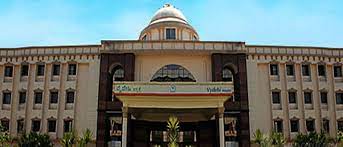MS Anatomy is a two-year post-graduate degree that deals with the practice of surgery on human bodies. MS in Anatomy candidates can set up their careers in various Medical fields. Some of the jobs include Research laboratories, Private clinics, Colleges/Universities, Science Institutes and many more.
MS Anatomy course is a postgraduate degree. MS Anatomy course duration is two years and divided into four semesters. Here students are given basic knowledge of body structure and how to do surgeries. The course falls under the umbrella of Master of Surgery. According to Wikipedia, “The Master of Surgery is the most advanced qualification in surgery. The Masters of Surgery or ChM is an advanced qualification in surgical medicine, established in Great Britain in the middle of the 19th century.”
MS Anatomy is a postgraduate degree with a study of Anatomy. This degree course provides basic knowledge of Anatomy, History of Anatomy, Elements of Anatomy, Advanced technology in Anatomy and so on. After completing the degree, the graduates are usually hired as Teaching, Research, Associate Professor Anatomy, Sr. Medical Coder, Medical Scientist, Research Assistant, Health Industry etc.
|
Semester I |
Semester II |
|
History of Anatomy |
Cross-Sectional Anatomy |
|
General Anatomy |
Applied Anatomy |
|
Elements of Anatomy |
Principles of Microscopy and Histological Techniques |
|
Gross Human Anatomy |
General and Systematic Histology |
|
Principles of Physical Anthropology |
Practical Schedule |
|
Museum techniques, embalming techniques including Medicolegal aspects, and knowledge of Anatomy Act |
Collection of tissues, fixing, block making, section cutting; use of different types of microtomes and preparation of general and systemic slides |
|
Medical Ethics |
Hematoxylin & Eosin |
|
Recent Advances in Anatomy |
Preparation of Stains |
|
Semester III |
Semester IV |
|
General and Systemic Embryology Including Growth, Development and Teratology |
Radiological Anatomy including Principles of newer techniques |
|
Neuroanatomy |
Interpretation of CT Scan, Sonography and MRI |
|
Surface Anatomy |
Human Genetics |
|
Staining Techniques |
Knowledge of Light Microscope and Electron Microscope |
|
Knowledge of Special staining techniques like Silver Nitrate, PAS staining, Osmium tetroxide, Van Gieson etc |
Detailed Microscopic Study of All The Tissues (General and Systemic Slides) |
|
Embryo (chick embryo) mounting and serial sections of Embryo- should be taken, stained with Hematoxylin & Eosin |
Comparative Anatomy |




Student Review About Course